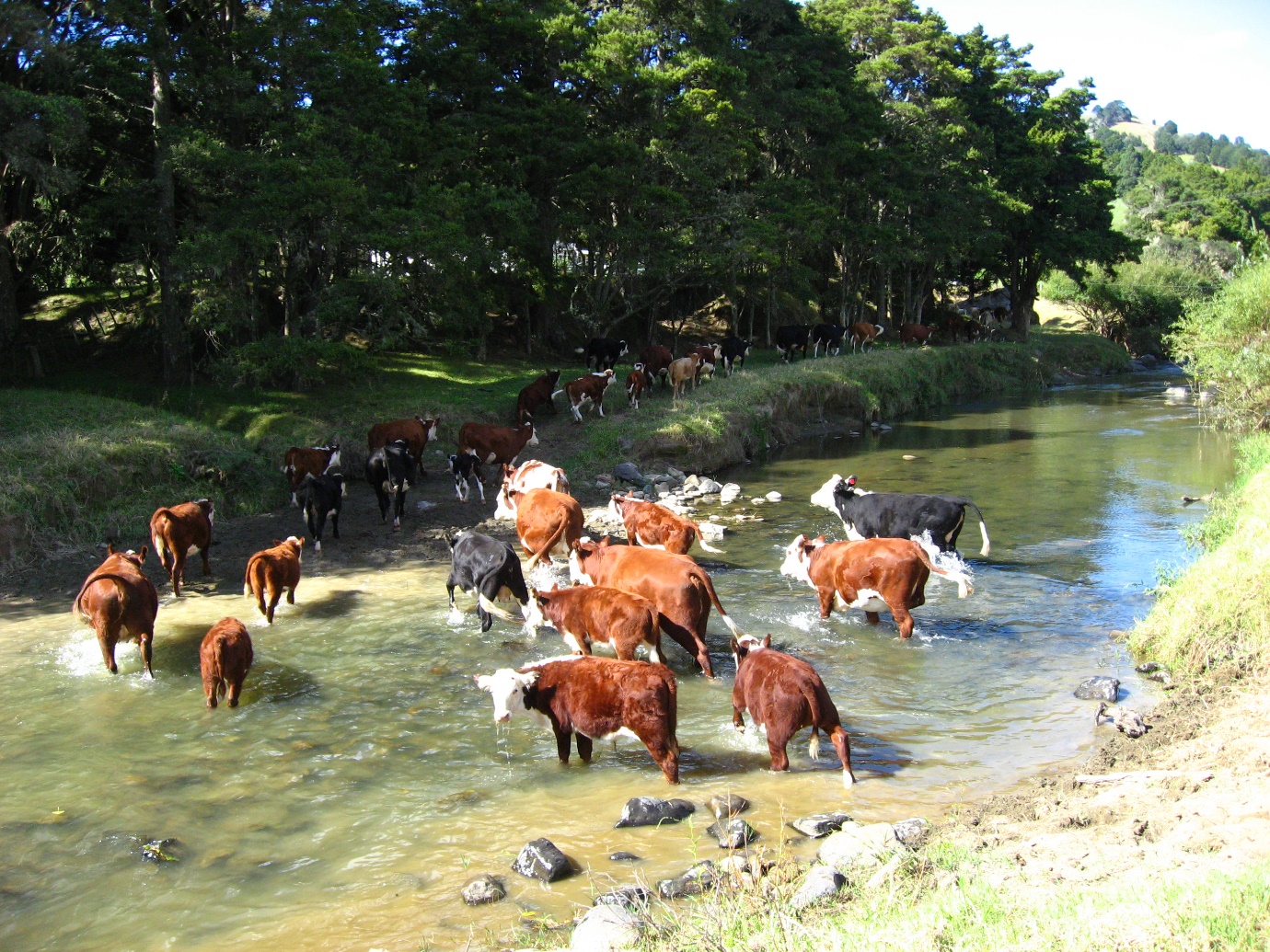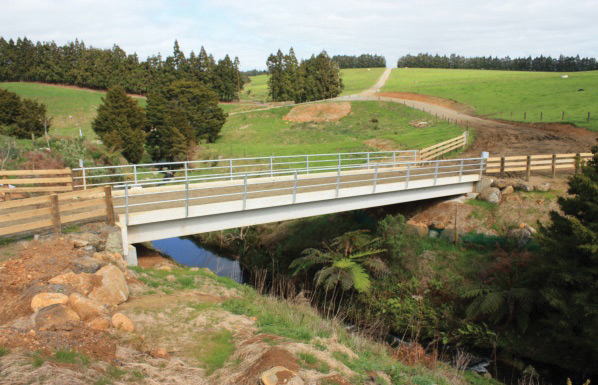Stock crossings
What
The type of stock crossing required is dependent on waterway size and shape, high flow levels and the types of vehicles that also need to cross. Generally, if the waterway is less than 2m wide (bank to bank) and annual rainfall is less than 1800 mm a culvert is often sufficient. A bridge is favoured in conditions that exceed the above criteria. Some multi-barrel or large coverts could also apply. It is critical that any structure placed in a waterway does not impede fish passage.
The best location for a crossing is across a straight stretch of stream with a low gradient. Ideally a crossing point should be at a narrow point on the waterway, with flat approaches on either side or approaches that slope away from the waterway. Flat or slightly rising approaches are safer for farm vehicles, reduce the risk of stock slipping and reduce sediment and nutrient runoff into the waterway. Bends in the stream near culverts are more likely to cause erosion.
When constructing a crossing it should be graded so that storm water runoff from the track leading to and from the crossing can be diverted away from the stream and onto a grassy area. Raised edges on the crossing will help prevent direct runoff from entering the water.

Image credit: Piet Verburg, NIWA
Why
When livestock access water bodies they contribute the four main contaminants – microbes from animal waste, nitrogen, phosphorus, and sediment directly to the waterway. Stock can also cause riverbank erosion and eat and trample riverbank vegetation used for riparian management purposes. Sediment instream smothers the habitat reducing the places where invertebrates and fish can live and eat. Fencing livestock to keep them from accessing waterways and providing crossing points where stock are not wading across reduces the amount of contaminants in the waterways. It also reduces stock losses from drowning and bogging and protects stream bank plantings helping create a vegetation buffer that retains nutrients and soil on the land.
Installing bridges and culverts to keep stock out of waterways is desirable, particularly where stock regularly cross waterways. Many bridges and culverts will require a resource consent, however some small ones do not. Consult with your regional council to find out what their rules are around constructing crossings. If a proposed crossing is on a waterway managed by the regional council for flood protection purposes, restrictions may apply.

Image credit: DairyNZ
Regulations
The Stock Exclusion s360 Regulation amendment to the Resource Management Act requires the following conditions be met for stock crossing over waterways. All cattle (dairy, dairy support, and beef) and pigs must cross a lake or wide river using a dedicated bridge or culvert unless they are supervised and actively driven across the lake or wide river AND do not cross the same lake or wider river (directly through water) more than twice in any month.
The requirements to stock crossing rules do not apply to stock crossing a wide river, if it is too difficult to install a dedicated bridge or culvert because the river has a highly mobile bed AND the stock are supervised and actively driven across the river. The current rules also do not apply to sheep and deer.
A wide river is defined by the Resource Management Act as a river with a bed that is wider than 1 metre anywhere in the land parcel.
References